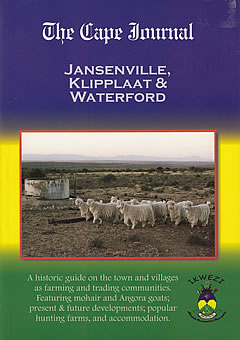The Sundays River
Monday, 20th November 2017
The Sundays River enters the district on a farm called "Vaaldraai" and leaves the district on a farm called "Vaaldraai", 112km away. A hundred and fifty years ago one could make a living on the river, for sufficient wheat and mealies were grown for the requirements of the surrounding country, and there was a large exportable surplus. Fruit and wine were cultivated and quantities of brandy and raisins were made.
The boundaries of the erven entitled to riparian rights, sold by Petrus Fourie, were all planted with quince hedges. Farmers came along and picked quinces, and towards the end of the season one could smell the fruit on approaching the bridge. With the result, the river lands between "Uitkomst" and Jansenville, and Waterford and Vaaldraai, attracted many settlers, mostly of the poorer class.
The fertile alluvial soil became tired due to over grazing by the white man's live-stock, and the perennial flow of the Sundays River ceased. At first there was the loss of a crop every few years; in time this became the order of things, and partly as a result of crop failures and inter-marriage; the class known as "Poor Whites" had arrived! The plight of these people became progressively worse, and was only relieved with the great exodus to Uitenhage and Port Elizabeth. During the years 1925 to 1930 a thousand left the district to settle elsewhere.
The agitation for a bridge over the Sundays Rive was in progress even before Jansenville was laid out in 1855, but when in 1859 it became aware that the Authorities had suggested building the bridge at "Noosdornplaats" there was a storm to protest. A petition for a bridge at Jansenville was signed and submitted to the Governor.
The river as well as the years rolled on until 1874 when work started. The event was described at the time as follows:
"The opening of the Jansenville Bridge on the 25th of April 1875, may be regarded as one of the greatest events that has ever taken place in the midland districts. It was the inauguration of the bridge over that furious, dangerous, and treacherous torrent, the Sundays River. Statistics were compiled by the merchants of Port Elizabeth and subsequently criticized in Parliament, showing that more traffic passed over the road to Graaf-Rienet than over any line in the Colony and it will therefor be seen, even at this distant date, that the opening of this bridge was an event that interested Port Elizabeth, Graaf-Rienet, and th districts beyond."




